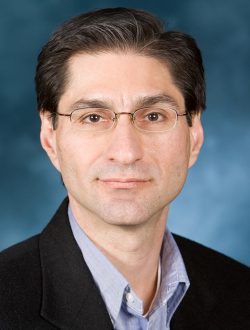Summary
Recent requirements in 5G communication and advanced driver assistant systems have drawn an increasing interest in utilizing phased array technologies. Bandwidth intensive applications such as real-time video streaming and emerging gigabit wireless communications demand higher data rates than ever before. The spatial selectivity of phased arrays can increase the channel capacity and data rate without requiring extra bandwidth. Furthermore, the spatial filtering nature of the phased array systems alleviate the problem of multipath fading and co-channel interference by suppressing signals emanating from undesirable directions. Unfortunately the high cost of phased arrays has been the primary impediment to their deployment in many commercial applications. Several new approaches for the design of new phase shifters and phased arrays will be presented to reduce the size, cost and complexity of the conventional phased arrays.
Speakers

Professor of Electrical Engineering
University of Michigan
Amir Mortazawi received the Ph.D. degree in electrical engineering from The University of Texas at Austin, in 1990. He is currently a Professor of electrical engineering with The University of Michigan at Ann Arbor. His research interests include microwave and millimeter-wave circuits, phased arrays, power amplifiers, ferroelectric thin film based devices and frequency-agile microwave circuits.
Mortazawi was the Editor-in-Chief for the IEEE TRANSACTIONS ON MICROWAVE THEORY AND TECHNIQUES from 2006-2010. He served on the IEEE Microwave Theory and Techniques Society (IEEE MTT-S) Administrative Committee (AdCom) for eight years. Mortazawi served as the Associate Editor for the IEEE TRANSACTIONS ON ANTENNAS AND PROPAGATION (1998–2001) and IEEE TRANSACTIONS ON MICROWAVE THEORY AND TECHNIQUES (2005). Mortazawi is a Fellow of IEEE.